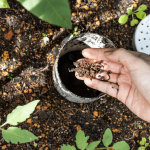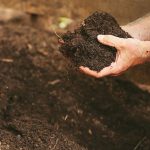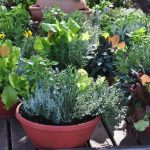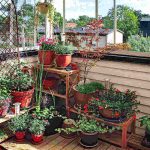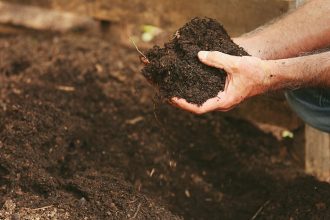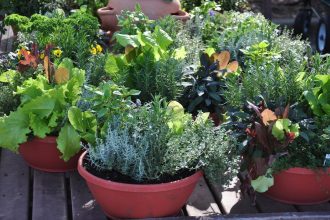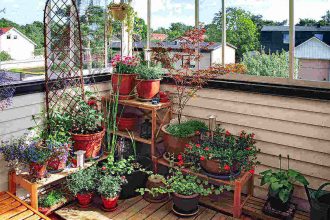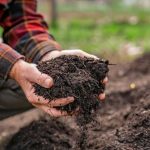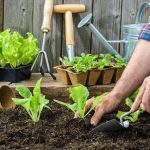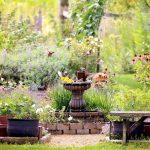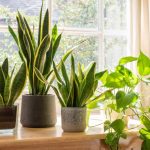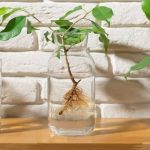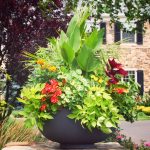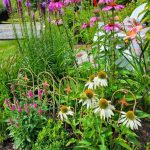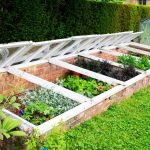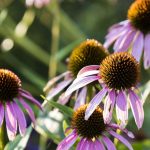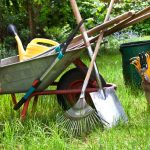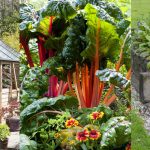Are you looking to bring a touch of green into your home, even with limited space? Growing a successful herb garden indoors might be just the solution for you. With a few simple tips and tricks, you can enjoy fresh herbs year-round, right from the comfort of your own kitchen. Whether you’re a seasoned gardener or a beginner with a green thumb, read on to discover how you can create a thriving indoor herb garden that will add both flavor and beauty to your home.

Essential Herbs for Indoor Gardens
One of the keys to a successful herb garden indoors is choosing the right herbs to cultivate. Not all herbs thrive in indoor environments, so it’s important to select ones that are well-suited for growing indoors. Some essential herbs to consider for your indoor garden include:
- Basil: A versatile herb that is easy to grow indoors and adds a delicious flavor to many dishes.
- Mint: Mint is a hardy herb that grows well in containers and can be used in teas, cocktails, and culinary dishes.
- Parsley: This herb is packed with flavor and is a great addition to salads, soups, and other dishes.
- Chives: Chives are a low-maintenance herb that add a mild onion flavor to dishes.
These herbs are not only easy to cultivate indoors, but they also provide a variety of culinary uses that can enhance your cooking. By including these essential herbs in your indoor garden, you can enjoy fresh, flavorful herbs year-round.
Optimal Growing Conditions for Herbs
When growing herbs indoors, it’s crucial to provide them with the right conditions to thrive. Here are some tips to help you create the optimal growing environment for your herb garden:
Lighting: Herbs require plenty of light to grow well. Place your indoor herb garden in a sunny spot where they can get at least 6-8 hours of sunlight per day. If natural light is limited, consider supplementing with a grow light.
Temperature: Most herbs prefer temperatures between 60-70°F during the day and slightly cooler at night. Avoid placing them near drafts or heating vents, as extreme temperature fluctuations can stress the plants.
Watering: It’s important to keep the soil evenly moist but not waterlogged. Allow the top inch of soil to dry out between waterings to prevent root rot. Be sure to also use a well-draining potting mix to avoid water buildup.
| Herb | Light | Temperature | Watering |
|---|---|---|---|
| Basil | 6-8 hours of sunlight | 60-70°F | Evenly moist soil |
| Rosemary | 6-8 hours of sunlight | 60-70°F | Allow top inch of soil to dry out between waterings |
| Mint | 6-8 hours of sunlight | 60-70°F | Keep soil consistently moist |
Tips for Watering and Fertilizing Your Plants
When it comes to growing a successful herb garden indoors, proper watering and fertilizing are key factors to consider. Here are some tips to help you keep your plants healthy and thriving:
- Watering: Make sure to water your herbs regularly, but be cautious not to overwater. Check the soil moisture by sticking your finger into the soil – if it feels dry, it’s time to water. Ensure proper drainage to prevent waterlogged roots.
- Fertilizing: Herbs are light feeders, so avoid over-fertilizing which can actually harm them. Use a well-balanced, water-soluble fertilizer once a month during the growing season. Always follow the instructions on the fertilizer package for best results.
| Herb | Watering Frequency | Fertilizing Schedule |
|---|---|---|
| Basil | 1-2 times per week | Once a month |
| Rosemary | Once every 1-2 weeks | Once every 3 months |
| Mint | Every 2-3 days | Once a month |
Harvesting and Preserving Your Herb Garden
When it comes to growing a successful herb garden indoors, there are a few key tips to keep in mind. First and foremost, make sure to choose the right location for your herbs. They need plenty of sunlight, so placing them in a sunny window or under a grow light is essential.
Next, be sure to water your herbs regularly, but be careful not to overwater. Herbs like well-drained soil, so allowing the soil to dry out slightly between waterings is ideal. Additionally, it’s important to regularly prune your herbs to encourage healthy growth and prevent them from becoming leggy.
When it comes time to harvest your herbs, do so in the morning when their flavors are the most potent. Use sharp scissors to snip off the top leaves, leaving the bottom leaves to continue growing. To preserve your herbs, consider drying them by hanging them upside down in a cool, dark place or freezing them in ice cube trays with olive oil.
With these tips and tricks, you’ll be well on your way to cultivating a thriving herb garden indoors. So go ahead, unleash your green thumb and dive into the world of indoor gardening. Whether you’re a seasoned gardener or a newbie, there’s nothing more satisfying than growing your own fresh herbs right in the comfort of your own home. So get your hands dirty, experiment with different varieties, and watch your indoor herb garden flourish before your eyes. Happy gardening!


